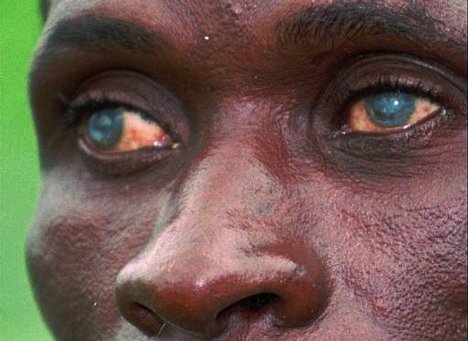How to Diagnose Onchocerciasis

Onchocerciasis is an infection by the Onchocerca volvulus nematode. It is transmitted by black flies of the Simulium genus and affects 18 to 40 million people worldwide, most of them are in Nigeria. Approximately 2 million people are blind because of Onchocerciasis and it is a major cause of skin disease in Africa. Undoubtedly, it is the second most severe infection in the world that can lead people to blindness. At times, the diagnosis of Onchocerciasis is difficult to perform but one can succeed with a little precaution.
Instructions
-
1
Watch closely for skin related symptoms
The most common and initial symptom of Onchocerciasis is a strong feeling of itchiness. As time passes, the itching increases and it leads the individual to severe rashes. Subsequently, the erosion and rashes cause skin abrasions which are generally known as ‘leopard skin. -
2
Examine the patient’s eyes
Apart from the skin infection, Onchocerciasis is also one of the major causes of blindness. Therefore, it is important that a person should be examined for eye related symptoms. The microfilariae may be seen migrating freely through the vitreous humour. The live microfilariae causes little reaction but provokes a severe immune response when they die. As a result, the individual suffers from blindness because of prolonged infection and re-infection. -
3
Use the oncho-dipstick diagnosis
The oncho-dipstick diagnosis is considered to one of the most important tests that show accurate results even in the initial stages. This test is conducted by taking a urine sample of the patient. According to a study, this test is said to be very sensitive and accurate specifically in urine. Make sure you use a reputable laboratory to get this test done properly. -
4
Obtain part of the skin with scleral punch
One of the most traditional ways of diagnosing Onchocerciasis is by taking a sample from any part of your skin. The skin sample is then processed through the standardised techniques to identify the amount of microfilarial load in the human body. Not to mention, this procedure is relatively painful and can result in blood-borne diseases. An enzyme-linked immunosorbent assay can distinguish Onchocerca from related species but is not always available. -
5
Identify Onchocerca volvulus histologically
The length of the microfilariae is 0.3 micrometers. When they are alive, they form a coiled shape but turn straight and opaque after they die.




